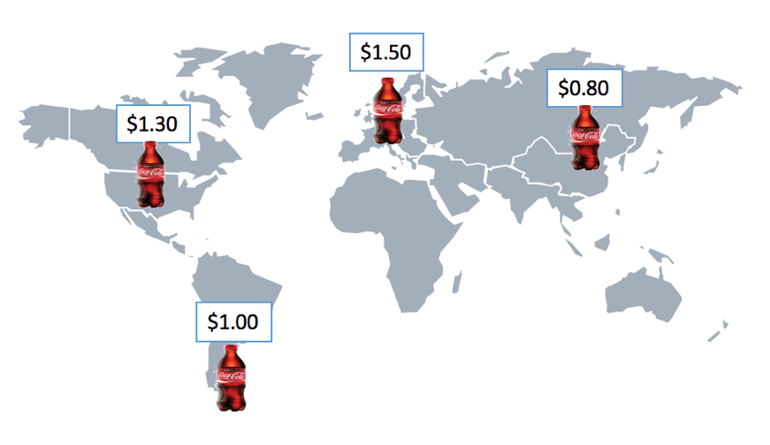International Pricing: Managing Willingness to Pay Differences
 PriceBeam
·
2 minute read
PriceBeam
·
2 minute read
Most firms deal with globalized customers, e.g. multinational retailers. The different markets in which these retailers operate in will have very different characteristics, such as different income levels, preferences and market conditions, all of which creates a difference in willingness to pay of the different countries.
However, while, in theory, you should simply charge a different price in the different countries, this will inevitably cause a stir -- if Company A notices a difference in the list price in Italy compared to France, they will either buy products in whichever country is cheaper, i.e. parallel import your products, or threaten to cut the supplier relationship unless they get a similarly low price in all markets. In other words, consumer goods firms selling to globalized clients need to manage both the risk of parallel imports and key account risk.
It seems clear to us that major differences in list prices will expose firms to high risks in both the aforementioned areas. Instead, the price differences should be considered when managing the pocket price waterfall. For instance, if we assume there is a higher willingness to pay for your products in France than in Italy, then you should still keep list prices the same, but then give lower discounts and rebates in France. Consequently, you will get a higher pocket price in France, as well you should.
To make sure your rebates and discounts are granted according to willingness to pay, it is crucial to equip salespeople with this information, alongside a clear guideline to how this information should be interpreted and used; i.e. if willingness to pay is 10% lower in Italy than France, make it clear how this changes the discount- and rebate policy in the two respective countries.
In order to ensure the alignment of willingness to pay and pocket prices, it can be very useful to use the pocket price waterfall. From time to time, we run into firms that say something along the lines of "We have finally gained control of our discounting and rebating now! The reason our margins are lower now is that we give out lots of free stuff to increase customer loyalty and build long-term relationships."
You may have your reasons for giving out free stuff, but it's certainly part of the pocket price waterfall, and whatever your reason is for giving out free stuff, willingness to pay should be accounted for here, too. If Company A's prices in Italy are close to their willingness to pay, or even higher, free stuff is much appreciated, whereas it won't make a noticeable difference in a country where the list price is much lower than willingness to pay.
To learn more about the pocket price waterfall, read this article.
.png?width=400&height=100&name=PBLogoTransparent%20(1).png)





